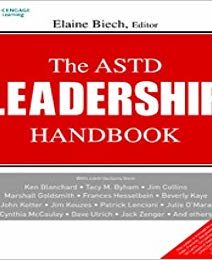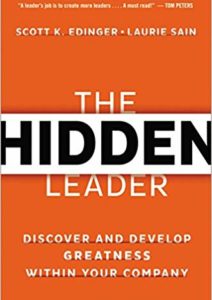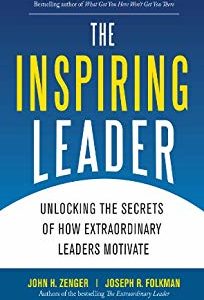When you graduate from college with a degree in communication studies and rhetoric, the business world can look very confusing. Unsure of where I fit in, I explored options. Many friends suggested sales. I was doubtful. I worried that being in sales would not carry the prestige and credibility I so badly wanted as I started my professional career. I was also having a hard time getting excited about selling any particular product.
Then I interviewed with a partner at a (then) Big Six consulting firm. He talked about an opportunity to work on “leveraging the most important assets in the firm— its people.”
“That sounds terrific,” I said, thinking that matched my interests, “What function is that?” The partner replied, “Human resource management.”
My 22-year-old self thought, How cool is that? It even has management in the title. That sounded way better than “Sales Rep for Acme Company.” Off to San Francisco I went to be a human resource management associate at a Big Six consulting firm.
After two years in this position, I had an epiphany. I was at an expense-account business lunch with a senior partner and an audit associate. The partner liked us both and remarked that we both had a lot of talent. He went on to say, “The main difference is that you (pointing to the audit associate) generate revenue, and you (pointing to me) are overhead.” Two of the three people at the table had a quick laugh, and my job search began as soon as we returned to the office. I came to a stark realization that day: sales is at the heart of every commercial enterprise and that being the revenue-generating engine of a business was actually a good thing. Maybe even something to be proud of.
In truth, though, I was afraid of sales. The perception. The quotas. I hated the idea of having to be pushy.
I’m hardly the only one with this misconception of sales. Twenty years later, with two stints as an executive vice president of sales along the way, I often see that despite the obvious need to sell their products, many companies encounter some form of resistance to “sales.” Ironically, this unwillingness to own and embrace a sales culture frequently comes from within the sales team itself. I hear sales professionals say, “I don’t really sell. I help clients make a buying decision.” Or “My job is more of being a consultant to my clients.” And my favorite, “I’m not in sales, I’m in business development.” Even professionals who have dedicated their careers to sales are afraid of sales. Or at least, they’re afraid of the label. Why?
I’ve come to the conclusion that at least part of that fear stems from the persistence of an anachronistic definition of selling and a complete misunderstanding of what successful sales professionals actually do.
Many people equate sales with making people buy things they don’t want, don’t need, and can’t afford. That perception likely emerged from the days, at the turn of the 20th century, when hucksters and peddlers were among the few sales jobs on the U.S. census, and unfortunately this image still persists in some professions. The proverbial used-car salesman springs to mind.
But today there are over 28 census codes that reference professional sales specifically, many of which require tremendous expertise. For instance, a client of mine in the medical device industry employs sales professionals whom doctors consult about the proper application of their product while they are in surgery. Take that in. A doctor asking a sales professional questions during surgery. This is not your father’s salesman.
When I’m called on to help an organization with a sales transformation, I quickly gauge the culture and begin to address counterproductive beliefs that are holding them back from getting the performance they want. There are three key steps to overcoming a negative sales culture: You need to help them see that:
If you operate on the assumption that people will benefit from using your products and services, then sales is entirely about helping others. Done well, selling today is helping people identify and address their needs in order to achieve their goals: to improve efficiency in a business, to make something easier, to live a better life in retirement, to be safer, live longer, and so forth. In this way, sales is not simply an appendage of the organization responsible for distribution, but the conduit for showing how your clients benefit from your products or services.
How you sell is a vital part of the value you create for the customer. While conducting research and observing my own sales teams, I’ve sat in on over 1,000 meetings between sellers and buyers, and one of the things I’ve observed is that successful salespeople don’t “pitch” and they don’t “close.” That is, they don’t prattle on about how great their offerings are, and they’re not pushy (what some have called the “spray and pray” method). This may sound like heresy to many sales professionals, particularly those who cut their teeth in sales before the 1990s. But it is true.
What they do instead is engage in a mutual dialogue about what a client is trying to accomplish, and then apply the solutions offered through their products or services to the client’s needs. The very best ask smart questions, helping clients to see problems they didn’t even know they had or opportunities around the corner.
One of the best examples of I’ve seen of this was a sales rep for a major daily newspaper. Her job was to sell ad space in a highly competitive market where advertisers had ever-increasing alternatives to newspaper space. I had the opportunity to observe several of her sales calls as part of a consulting assignment for the paper, and I immediately noticed how little she talked versus how much she encouraged the client to speak. She told me that her objective was to help the client see why advertising with her newspaper would help him grow his business, and she asked insightful questions. When she did talk about advertising options, she focused specifically the ideas the client expressed. The meeting lasted only 45 minutes because she didn’t spend any time talking about features or benefits that weren’t relevant. At the end, she simply expressed an interest in working with the prospect, offering two or three suggestions on how they might proceed. He opted to receive a proposal and agreed to review it the next week. How she sold her product was key to her success as one of the top five sales reps in the company.
Every employee is selling in some capacity — even if they don’t think they are — so they might as well get good at it. In his book To Sell Is Human, Dan Pink indicates that more than 40% of our professional time is spent selling. Not only selling the company’s products or services, but selling ideas, approaches, or a particular way to solve a problem. I have written here before about how sales professionals create value with customers. Your ability to create value, is inextricably linked with your ability to sell, no matter what position you’re in.
When I work with professionals in customer service or IT who bristle at the idea of being in sales, I emphasize that done well, sales and service are very alike, though one is typically proactive, and the other is reactive. While that difference is not trivial, consider that the outcome of a good service experience and a good sales experience is the resolution of some problem a customer has, or the identification of some opportunity for improvement.
Don’t run from away from sales as I used to. Update your thinking to the 21st century. Sales is the engine powering all business. And sales professionals are the ones driving the train.
Related Posts:
- 13 Startling Sales Stats
- 4 Small Changes for Big Selling Success
- What Today’s Buyer Knows That Will Make You Rethink Your Business
Get your free trial of Pipeliner CRM now.
This post was originally published on Harvard Business Review and is reprinted here with permission of the author.
















































